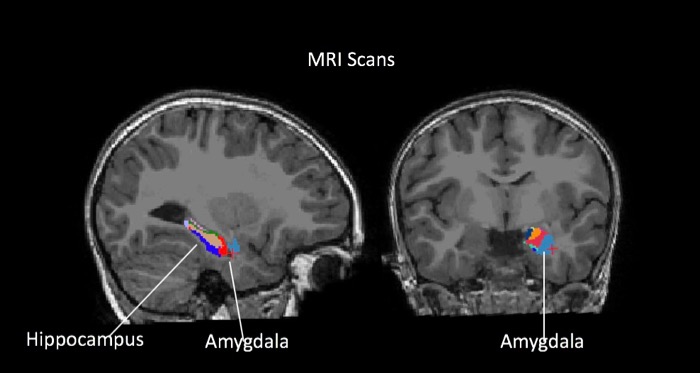By Paul Mayne
The discovery of a biomarker in the brains of those with neurodevelopmental disorders - such as autism, attention deficit hyperactive disorder (ADHD) or obsessive compulsive disorder (OCD) - may offer hope to families looking for clues in how to address anxiety and depression in their children.

Paul Mayne//Western News: Faculty of Education professor Emma Duerden said results of her latest study showed an enlarged part of the brain - the amygdala - has indicated higher incidents of anxiety and depression in children with neurodevelopmental disorders like autism. She hopes her findings will lead to more targeted behavioral interventions.
The amygdala, an almond-sized structure in the medial temporal lobe, plays a key role in processing emotions. However, in some children with neurological disorders, a portion of this key brain structure is enlarged, leading to an increase in anxiety and depression.
While 6 per cent of children, in general, are impacted by issues of anxiety, that number spikes to 85 per cent for children with autism.
"This is a major issue," said Faculty of Education professor Emma Duerden, who recently presented her finding at the Society of Neuroscience annual meeting in Chicago.
In the study, through the Province of Ontario Neurodevelopment Disorders (POND), Duerden measured the size of this region in brain scans from 233 individuals, aged 6-18 years, including 111 children with autism, 38 with ADHD, and 27 with OCD.
"We looked at anxiety in the groups. The children with neurodevelopmental disorders broadly had higher incidents of anxiety and depression in comparison to typically developing children when we looked at all the parts of the amygdala," Duerden said.
The amygdala is comprised of a group of nuclei, or clusters of neurons. The basolateral complex, the largest of the clusters, is located roughly in the lateral and middle parts of the amygdala. It is in that area where researchers saw differences in size that may help predict anxiety and depression in these children.
"Indicating this key nucleus could be a key biomarker where we can really hone in on this one area to predict children who are at risk in order to develop potential therapies."

Often times, therapies are based on subjective reports from the child or parent regarding the child's anxiety levels. Having this objective biomarker, however, will allow researchers to track whether targeted therapies are beneficial or not.
Therapies could include a move towards more school-based programs that promote self-regulation and emotional awareness, such as the MindUP program currently used within the London District Catholic School Board. MindUP teaches the skills and knowledge children need to regulate their stress and emotion, form positive relationships and act with kindness and compassion.
"It's important for families to realize there is a brain-based correlate to their child's behaviour, that the anxiety and depression they see in their children may be related to a neurobiological basis," Duerden said.













